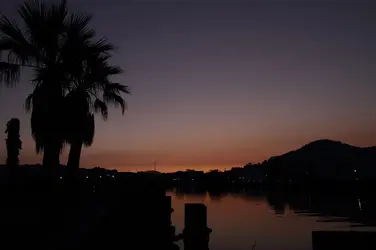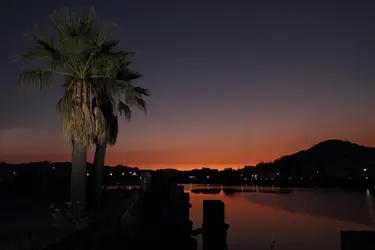crotonmark
TPF Noob!
- Joined
- Jun 13, 2012
- Messages
- 168
- Reaction score
- 1
- Thread Starter 🔹
- #46
Thanks. At least it wasn't me. photoshop totally intimidates me. PS I'm an accountant - not artistic at all!!
This is something I struggle with as well. First off, if possible, shoot at dawn or sunset. The drama from the lighting will add so much to your photos. Second, pay attention to the lines and make sure the horizon is level. The other benefit to dawn or sunset is less people in your shot, more so at dawn.
And when you are in a place you may never see again... don't be afraid to be the guy laying on the ground to get the shot... or the guy up at dawn or the guy in a crazy position. You don't know anyone there anyway so who cares what you look like if you get the shot.
you were using a wide angle lens from far away... I meant use the same lens but get in so close that (yes you will cut some off) you fill the frame with the building. You may have to lay on the ground to get the top to bottom in the frame. This is why wide angle is useful. Now you have a shot that says wow, thats tall and I'm small. Kinda like this: http://www.freeimageslive.co.uk/files/images005/abstract_architecture.jpg
Okay so focus, the problem you complained about originally.
The first two photos other than the super dark one are motion blurred. That's why they aren't in focus. Really obvious motion blur. Looking at their EXIF data, you shot both at f/2.8, 41mm, 1/25 of a second, and ISO 200.
1) Does your lens have image stabilization (switch on the side)? If so, make sure you have it on when photographing still subjects hand held. if so, 1/25th of a second should have been fast enough, so I'm guessing you don't have it or had it turned off.
2) If it doesn't have IS, then you should as a rule always shoot at at least 1/(your focal length) in speed, or faster. So at least 1/50th of a second at 41mm. And lo and behold, your final photo of the tomb was not motion blurred, and was shot at 1/50 of a second!
If it's dark, then you need to up the ISO to get the speed you need to not blur. ISO 200 is low, you can go much higher on a t4i without terrible graininess. At least up to 800, and 1600 if truly necessary. Here, 400 or 800 would probably have been sufficient, by giving you 1/50th or 1/100th of a second.
Also, you can take many photos, and choose the one that is least blurred. Statistically, if you take 5-10 photos, you can easily gain a stop of speed (i.e. shoot at 1/25th anyway and intentionally play the numbers, knowing you'll get lucky at least once).
You can also underexpose by a stop or even two stops on purpose using exposure compensation, if you shoot RAW, and then crank up exposure in post processing, to gain speed and avoid motion blur. This is similar to pushing film. You really shoot shoot RAW if you do this on purpose though, and then fix the exposure in the RAW converter, prior to editing it as a jpeg in photoshop or whatever.
On your final photo, the tomb is also blurry, but not from motion. Your focus was too far in front of the tomb. I can see a spot on the floor nearer the camera that is in perfect focus. Were you focusing manually? If so, you just need more practice. Were you focusing in auto? if so, what focusing mode? Spot focus (a single dot icon on canons) on the center point is generally the best for beginners. Check your manual for how to choose focusing modes. Also, in dark rooms, try to point your focusing dot at some part of the thing you want in focus that has high contrast. So on the tomb, the lettering is the highest contrast part, so you would probably want to put the dot right over some of the lettering to help out the AF system as much as possible.
There are two ways that you could have photographed Napoleon's tomb:Focus is not the issue here. The issue is how to grab the tomb and not lose the colors of the windows.



There are two ways that you could have photographed Naoleon's tomb:Focus is not the issue here. The issue is how to grab the tomb and not lose the colors of the windows.
1) Take two separate photos and combine them together, or
2) Set your exposure for the window (by substantially under-exposing) and use a flash to illuminate the tomb
Let me give you a specific example. Please take a moment to walk through the next three photos with me. I took them over the course of about ten minutes. I was at dinner with my wife, and noticed that the sky was turning gold with sunset. With her permission, I grabbed my camera gear out of the car and photographed the sunset from the balcony of the restaurant we were at.
Here is the photograph as taken using the camera's meter. As you can see, it's awful. It's like the pictures you took; it has no "pop." I've taken hundreds of photos like this one:
View attachment 50667
Click on it and take a look. You see kids running around, a bunch of correctly-exposed weeds growing, a bunch of ugly buildings... this is a throw-away shot, isn't it?
Next, I underexposed by about three stops (I tried a few different settings). And at -3 stops, the sky is correctly exposed:
View attachment 50668
Nothing complicated here, right? See how the sky now looks great? And this is what you could have done with the stained glass... just underexpose until the stained glass looks great.
But, as with your Napoleon picture, I wanted the palm tree in the foreground to look better. At first, I pointed my flash at the palm, but it was difficult to hand-hold. So my wife came to help me, and I used my camera's wireless slave feature and manual flash exposure, which I can set from my camera's rear panel. I showed her how to point the flash at the tree and my camera, and I tried 1/4 and 1/2 strength manual flash exposure, along with the exposure I already had for the background. The result is below:
View attachment 50669
This is not difficult! However... you cannot do this with a point and shoot camera. You need a camera that can dial down exposure by three stops and which offers control of a flash with tilt and swivel or, ideally, wireless remote slave functionality. I don't think you can get a photo like this the first time you try (I'll be PISSED if you can, let me tell you!)... but it's not terribly hard, either. This took me about fifteen minutes and thirty-five shots... but that's not counting the many times I've gone out without getting a shot like this.
As you can see, the photo is much better than what I started with, and that's what you should be able to do, too.
As others mentioned, you cannot get great results in the afternoon sun, unless you find a shadowy place to shoot. This can be a big challenge, because you go to an exotic place to photograph a specific thing, and the sun makes it impossible. In situations like these, seek out the shadiest spot you can find, and try to find something interest to photograph there.
